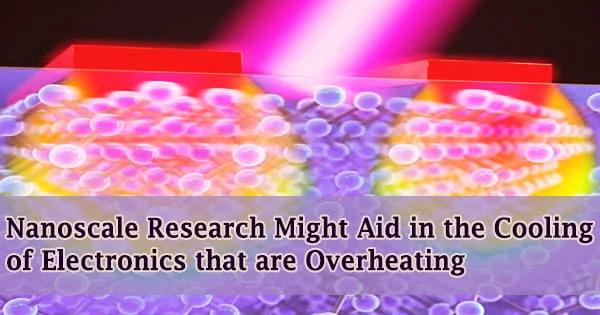A group of physicists at CU Boulder has cracked the code on a mysterious nano phenomenon: why some ultra-small heat sources cool down quicker when packed closer together. The discoveries, which were published in the journal Proceedings of the National Academy of Sciences (PNAS) today, might one day aid the tech sector in developing quicker electrical gadgets that are less likely to overheat.
“Often, heat is a challenging consideration in designing electronics. You build a device then discover that it’s heating up faster than desired,” said study co-author Joshua Knobloch, postdoctoral research associate at JILA, a joint research institute between CU Boulder and the National Institute of Standards and Technology (NIST). “Our goal is to understand the fundamental physics involved so we can engineer future devices to efficiently manage the flow of heat.”
These nano-scale heat sources are notorious for inefficient heat dissipation. However, if you pack them close together, they will cool down considerably faster.
Joshua Knobloch
The research began with an unexplained observation: In 2015, JILA researchers led by physicists Margaret Murnane and Henry Kapteyn were working with metal bars on a silicon basis that were several times thinner than a human hair. Something unusual happened when they used a laser to heat those bars up.
“They behaved very counterintuitively,” Knobloch said. “These nano-scale heat sources are notorious for inefficient heat dissipation. However, if you pack them close together, they will cool down considerably faster.” Now, the researchers know why it happens.
They employed computer-based simulations to follow the transmission of heat from their nano-sized bars in the current study. They noticed that when they put the heat sources near together, the energy vibrations they created started to bounce off one other, dispersing heat and cooling the bars.
The findings point to a significant issue in developing the next generation of small technologies, such as microprocessors or quantum computer chips: Heat does not always behave the way you expect it to when you compress it down to extremely small sizes.
Atom by atom
The researchers went on to say that heat transfer in gadgets is important. Even minor flaws in the design of electronics like computer chips can cause the temperature to rise, causing the item to wear out faster. As tech firms attempt to make smaller and smaller devices, phonons, the vibrations of atoms that transfer heat in materials, will become more important than ever.
“Heat flow involves very complex processes, making it hard to control,” Knobloch said. “But if we can understand how phonons behave on the small scale, then we can tailor their transport, allowing us to build more efficient devices.”
Murnane and Kapteyn, together with their team of experimental physicists, teamed up with Mahmoud Hussein, a professor at the Ann and H.J. Smead Department of Aerospace Engineering Sciences, and a group of theorists directed by him. His team focuses in simulating (or modeling) phonon motion.
“At the atomic scale, the very nature of heat transfer emerges in a new light,” said Hussein who also has a courtesy appointment in the Department of Physics.
The researchers effectively duplicated their experiment from several years ago, but this time on a computer. They heated up a sequence of silicon bars that were arranged side by side like slats in a railroad track.
The simulations were so comprehensive, according to Knobloch, that the researchers could track the activity of each and every atom in the model from beginning to end.
“We were really pushing the limits of memory of the Summit Supercomputer at CU Boulder,” he said.
Directing heat
The strategy worked. When the researchers spaced their silicon bars far enough apart, they discovered that heat tended to escape from those materials in a predictable manner. The energy dissipated in all directions as it flowed from the bars and into the substance underneath them.
But something else happened when the bars grew closer together. As the heat from those sources dispersed, it essentially drove that energy to flow more fiercely away from the sources, much like a swarm of people battling for position in a stadium before bolting out the exit. The team denoted this phenomenon “directional thermal channeling.”
“This phenomenon increases the transport of heat down into the substrate and away from the heat sources,” Knobloch said.
Engineers may one day be able to use this odd behavior to acquire a better understanding of how heat flows in small devices, guiding that energy along a preferred direction rather than letting it run wild and free, according to the researchers.
For the time being, the researchers regard the current study as an example of what can be accomplished when experts from other fields collaborate.
“This project was such an exciting collaboration between science and engineering where advanced computational analysis methods developed by Mahmoud’s group were critical for understanding new materials behavior uncovered earlier by our group using new extreme ultraviolet quantum light sources,” said Murnane, also a professor of physics.
The STROBE National Science Foundation Science and Technology Center on Real-Time Functional Imaging provided funding for this study.





